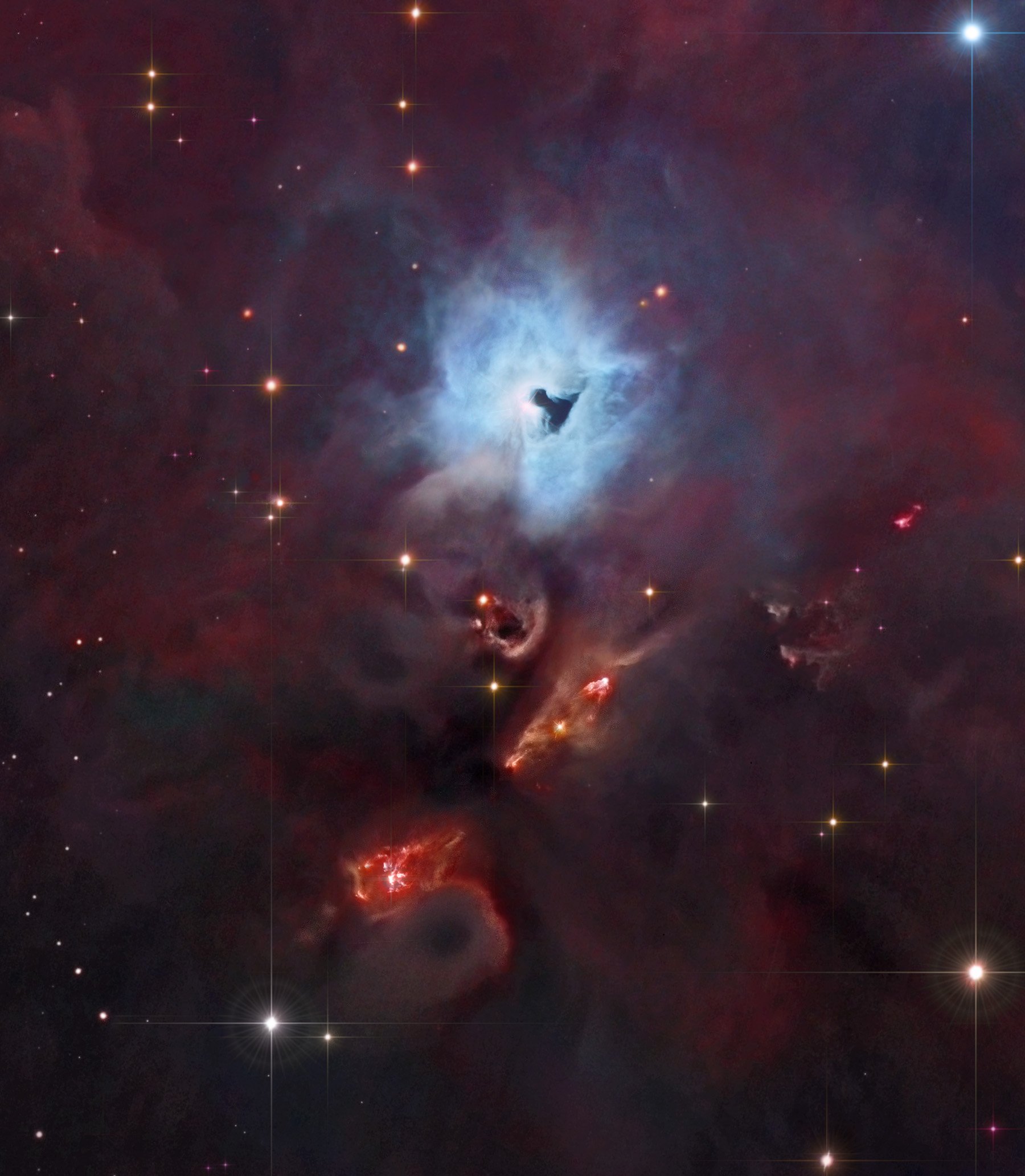In weekly publications, TecMundo and #AstroMiniBRChoose five curiosities about space, a Twitter profile that brings together astronomers and astronomy supporters. Check out this week’s highlights below!
#1: An empty lock in space
This “keyhole” image looked to me like a region of space with a lot of gas and dust blocking all the light behind it.
But it is not! This is truly an empty region of space and we do not understand its origin! #AstroMiniBR
(c) @NASAHubble pic.twitter.com/lewwyrnP2Y
— Thiago S Gonçalves (@thiagosgbr) October 28, 2022
The image above includes a somewhat curious observation captured by the lens of NASA’s Hubble Space Telescope (HST). This celestial body NGC 1999 is a reflection nebula in the constellation Orion, located about 1,350 light-years from Earth and close to the famous Orion Nebula, the closest region of high star formation to Earth.
NGC 1999 is the cosmic record of star formation history, as it consists of the remnants of a newborn star. This object is strongly characterized by fog that appears to curl around a glowing light pole due to its internal light source. This light source is the star V380 Orionis visible in the center of the image. However, the most notable feature of NGC 1999 is the dark region that looks like a hole in its center and resembles a cosmic keyhole.
A few years ago, as soon as the observation was made, astronomers believed that this dark spot was actually a structure known as the Bok sphere: a dense, cold cloud of gas, molecules that block all light emission, and cosmic dust. However, new observations indicate that the dark spot is actually a region of empty space of unknown origin.
#2: A giant telescope is coming!
The largest optical telescopes available have mirrors 8 to 10 m in diameter. The next generation of large telescopes will take a giant leap forward: the Giant Magellan Telescope will have a 24m composite mirror and will be operational by the end of the decade. #AstroMiniBR pic.twitter.com/rMPiBO4OdD
— The Deep Sky Project (@CeuProfundo) November 3, 2022
Modern astronomy is not just from super space telescopes! The Giant Magellean Telescope (GMT) is the most advanced ground-based telescope ever designed. Scheduled to be operational by the end of this decade, the GMT will break the barriers of human knowledge in astronomy and, like many other modern telescopes, will look into the unknown.
With unprecedented image quality, the telescope will have about 10 times the resolving power of the Hubble telescope and combine seven mirrors to make a combination of one of the largest mirrors in the world, about 25.4 meters in diameter, about 4 times longer. James Webb Space Telescope.
GMT’s scientific goals include the search for Earth-like planets, analysis of their atmospheres, search for signs of life, investigation of the cosmic origins of chemical elements, investigation of the mysteries of matter and dark energy, and many others.
#3: Dance of the planets
Eight planets, directions of rotation and inclinations of the axes of rotation!
Remembering that this trend is responsible for the seasons of the year, mercury (0.01º), for example, does not have seasons like ours!#AstroMiniBR pic.twitter.com/SS9iJWeZDk
— Giovanna Liberato (@liberato_gio) November 2, 2022
Like everything else in the universe, our solar system is in motion. Planets revolve around the Sun and also rotate around their own axis. This planetary dance dates back about 4.6 billion years and is caused by the initial conditions inherent in the formation of the solar system itself.
At that time, a huge cloud of gas and dust (formed from the remnants of earlier stars and interstellar matter) began to collapse under the influence of its own gravity. In doing so, the cloud began to spin and turn into a disk. Our sun developed at the center of this spinning disk, and then many small objects known as planetoids began to form. Planets, moons, asteroids and comets were formed from them. In this way, when the Sun and planets (and later planets) evolved, the angular momentum of the spinning disk was preserved – some of it in the rotation of the Sun and planets around their own axis.
The axes of rotation of the Sun and planets—that is, the imaginary line around which objects revolve—probably perpendicular to the plane of the original disk, but were altered over the next billions of years due to the gravitational disturbances suffered. , until you reach the current configuration shown in the image above.
#4: Home of aging stars
Check out this stunning image of the Terzan 1 Globular Cluster taken by the Hubble Space Telescope this October! 🇧🇷
Terzan 1 contains thousands of stars and is 22,000 light-years away in the constellation Scorpio. 🇧🇷#AstroMiniBR #Hubble pic.twitter.com/aC8asMuHy8
– Patricia Cruz, PhD (@patyccruz2) 29 October 2022
The above image was taken by the Hubble telescope and shows the splendor of the globular cluster Terzan 1. It is located about 20,000 light-years from us in the constellation Scorpio and is one of about 150 globular clusters belonging to our galaxy, the Milky Way. . These clusters contain a collection of about 100,000 stars held together by mutual gravitational forces in a roughly spherical fashion for several hundred light-years.
The Terzan 1 cluster contains some of the oldest stars in the Milky Way, shown in the reddish colored stars in the image. The blue ones are not part of the cluster, but rather brighter, younger stars in the foreground.
#5: The power of a quasar
Red quasars are those that emit more electromagnetic radiation in the red/IR region than in the blue/UV region. These objects are believed to be in an early stage of their activity when the central supermassive black hole is still shrouded in dust.#AstroMiniBR pic.twitter.com/ldgmp9iqwS
— Gabriel Roier ???? (@gabe_roier) November 1, 2022
Quasars are celestial bodies defined as the active nuclei of extremely bright (AGN) galaxies. active galactic nuclei🇧🇷 These galactic centers are powered by a supermassive black hole whose mass ranges from millions to tens of billions of solar masses, surrounded by an accretion disk of gas and plasma.
The gas in the disk falling into the black hole is heated by friction and emits energy in the form of electromagnetic radiation, making the radiant energy of quasars enormous, making them one of the most powerful and energetic objects in the Universe.
Source: Tec Mundo
I am Bret Jackson, a professional journalist and author for Gadget Onus, where I specialize in writing about the gaming industry. With over 6 years of experience in my field, I have built up an extensive portfolio that ranges from reviews to interviews with top figures within the industry. My work has been featured on various news sites, providing readers with insightful analysis regarding the current state of gaming culture.













